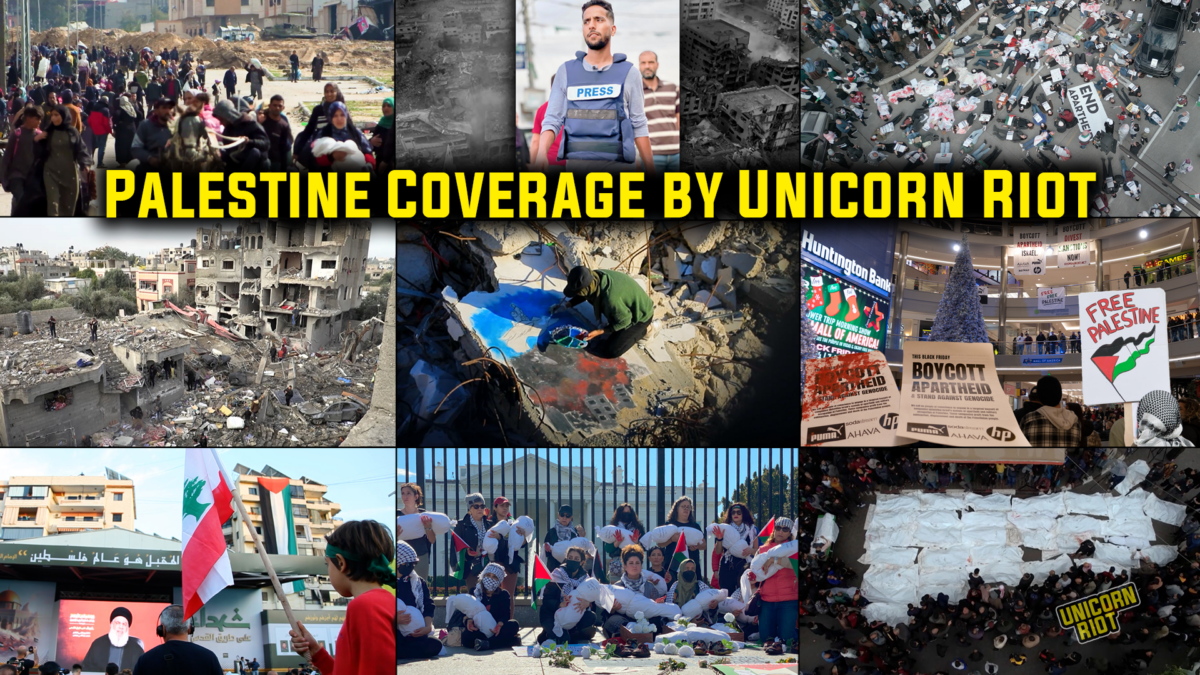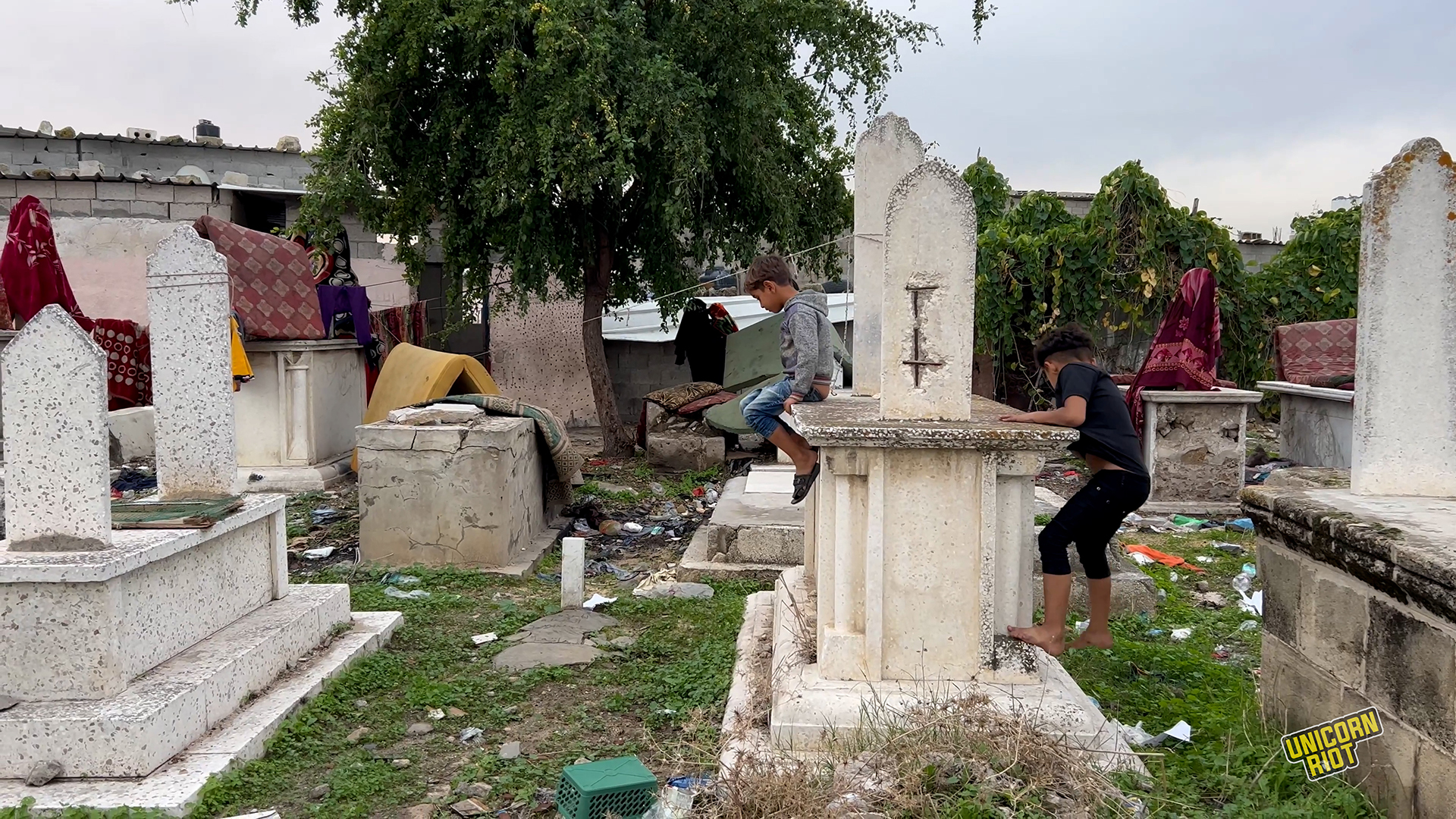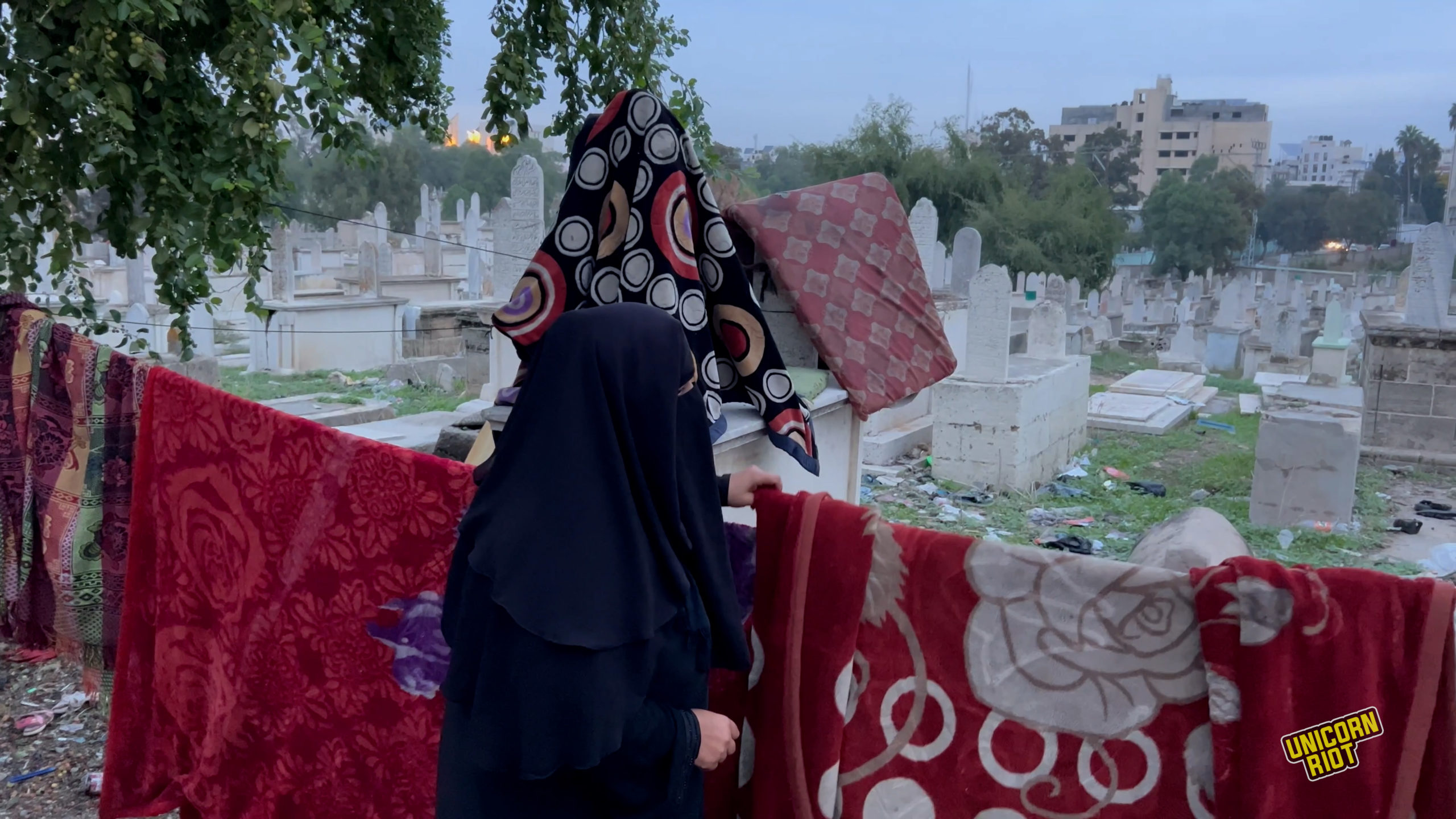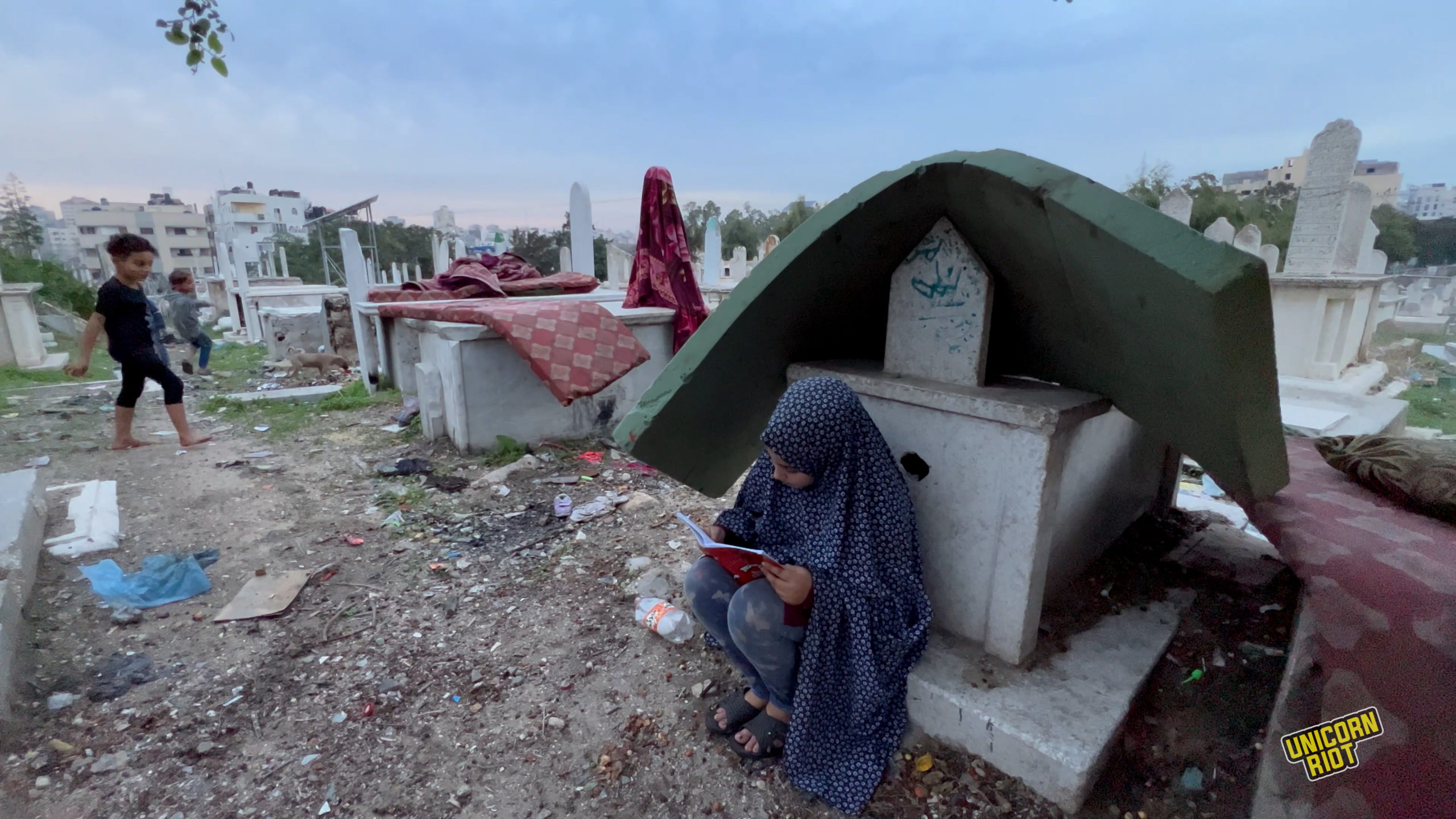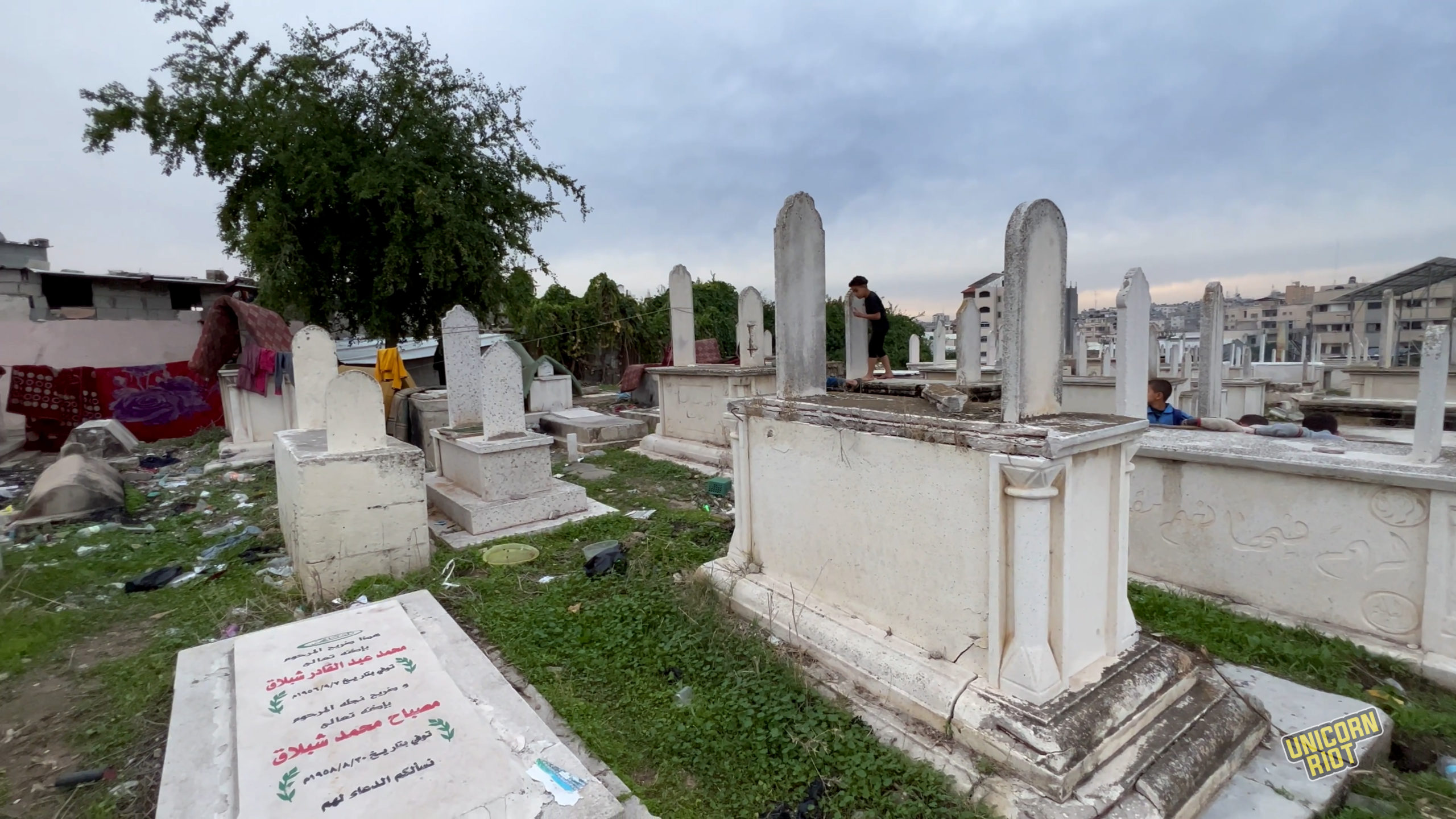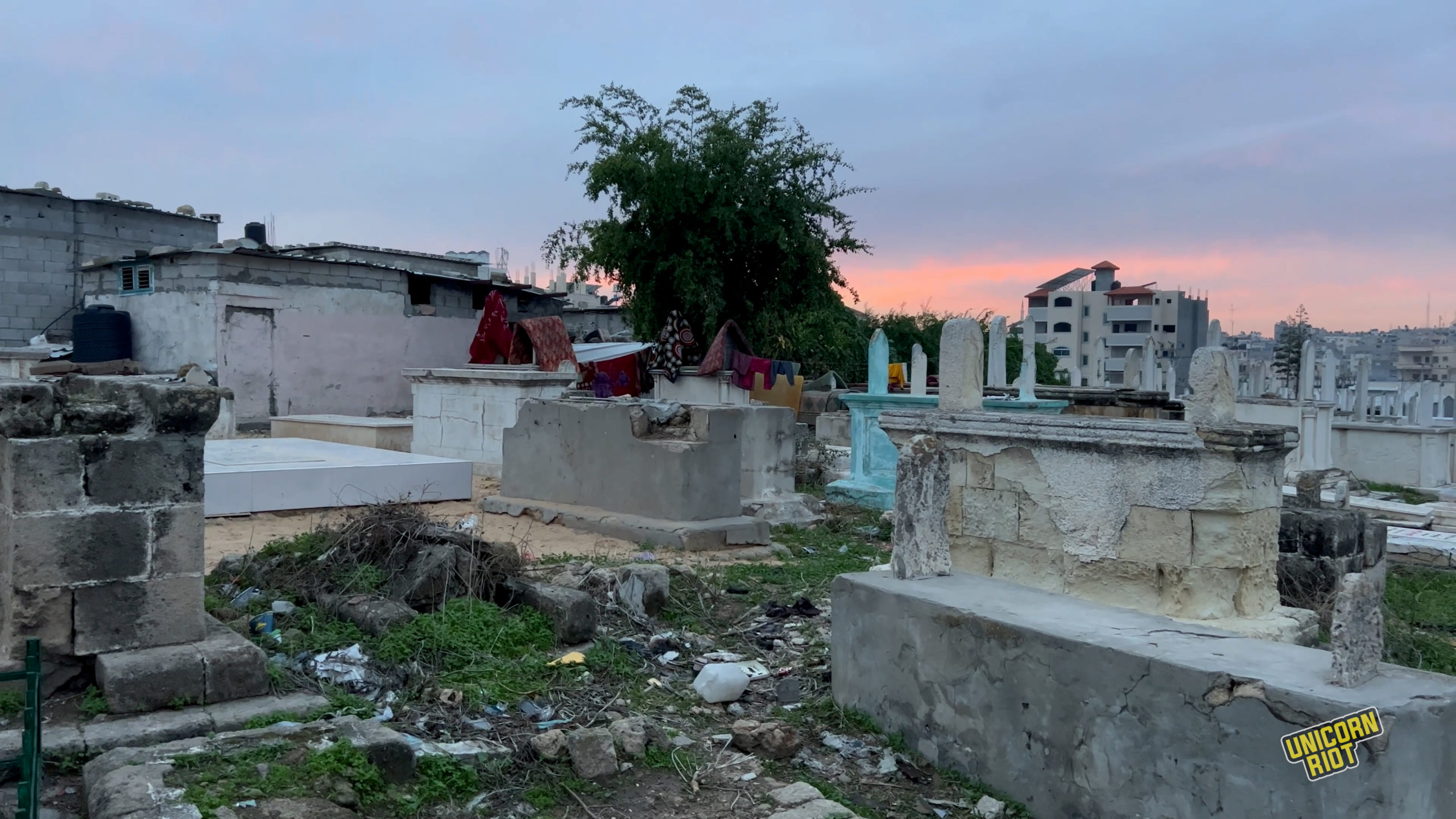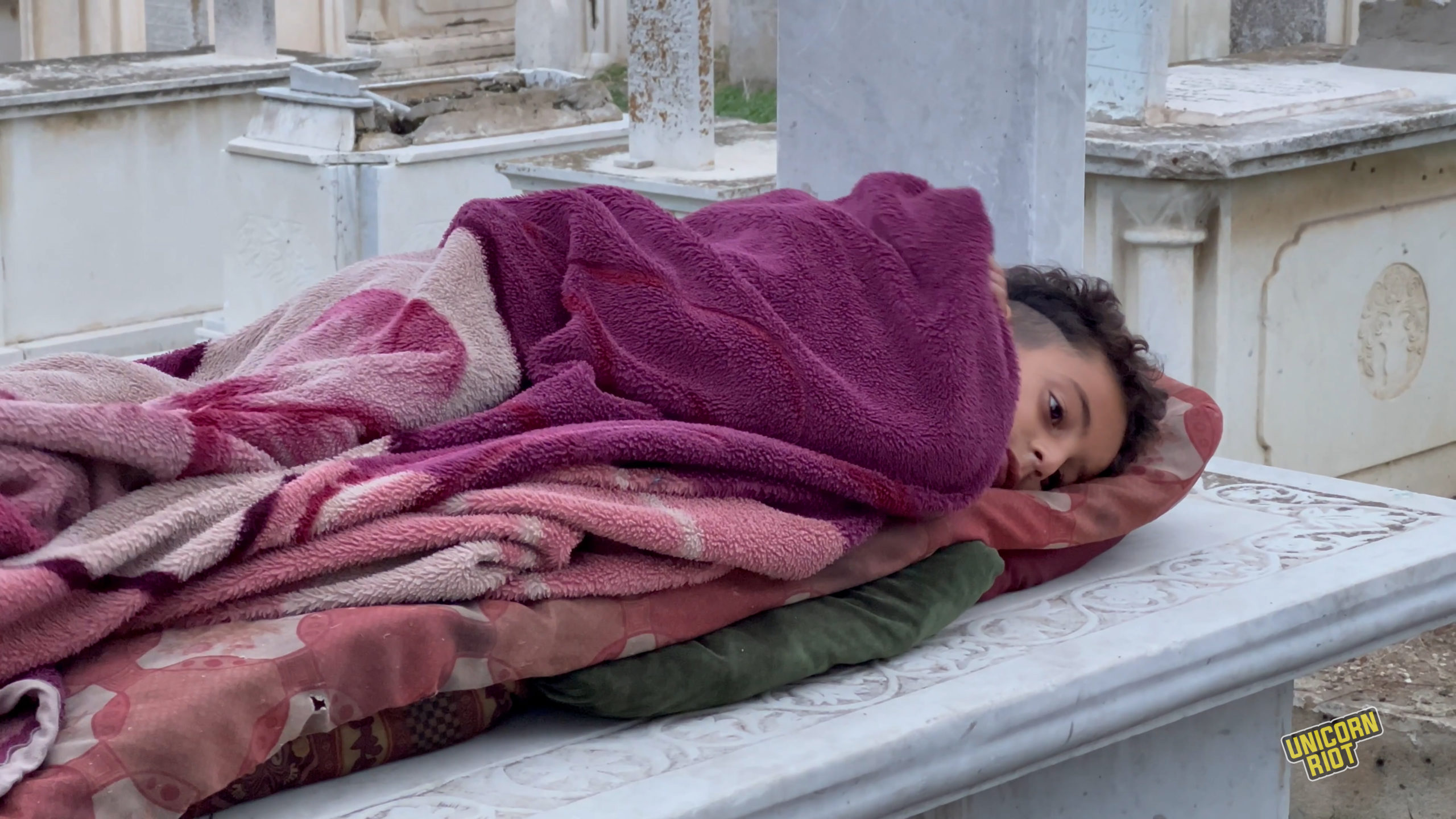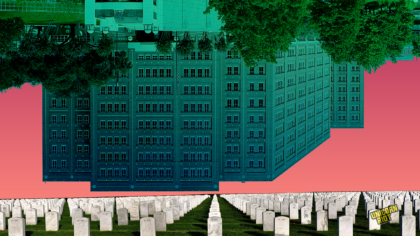Families in Gaza Live Among the Dead
Gaza Strip, Palestine – A growing number of families in the densely populated and besieged Gaza Strip are living in squatted sections of cemeteries due to the lack of housing.
One of the many families staying in the Sheikh Saban cemetery, the oldest in Gaza, is the family of Mrs. Kamilia Kuhail. Kuhail’s husband built the squat on the eastern side of the cemetery on top of the graves of two unknown persons.
“What I can say? The means of life are cut off from their foundations here. As they say, living among the dead, as you can see we are buried alive.”
Kamilia Kuhail, living in Sheikh Saban cemetery with her children
The Gaza Strip, roughly 140 square miles off the coast of the Mediterranean Sea, and bordered by Israel and Egypt, is the smaller of two occupied Palestinian territories. Gaza is one of the mostly densely populated places in the world and has been under a land, air, and sea blockade imposed by the occupying Israeli forces since 2007.
Beyond being under siege, Gaza has seen four wars in the last decades which have resulted in the deaths of nearly 4,000 people, many of them children and has borne the brunt of countless bombing campaigns by high powered Israeli weaponry.
Last year, nearly 50 Palestinians were killed in three days of Israeli airstrikes on Gaza targeting Palestinian militants seeking freedom from occupation.
The wars heavily impact people’s living conditions and for those already living at the cemetery, the war exacerbates the “state of terror” that Kuhail’s children live in.
“Regarding the war, we feel fear and terror and the children feel very afraid and our house is not completely built as you can see. And when a war occurs, the fragments and shrapnel reach here and above the house and the sounds of explosions leave the children feeling very frightened, living in a state of terror.”
Kamilia Kuhail

The suffering of the living has reached the dead, as many graves and final resting places are under pressure from families of squatters and an increasing number of those who have nowhere else to go.
Kamilia Kuhail says that living in the cemetery “is very difficult” and “very dangerous. Here there are snakes, scorpions, dogs, and children at night are afraid of these things.”
With a growing youth population, a lack of building materials from the blockade, and a lack of funding, housing in Gaza is scarce and the need is high. There is also a fierce competition for real estate in Gaza, with increasing demand for housing and agricultural land to provide food for the growing population who needs 14,000 new housing units annually, according to the Deputy Minister of Housing in Gaza,
“My daughter studies in the cemetery, and children live all their lives among cemeteries now, playing and studying. I teach them among the tombs, we spread here and I teach them. And as you see children playing on the graves, this is their own park.”
Kamilia Kuhail
Land needs for the dead is also on the rise in the Strip as the Waqf Ministry closed at least 24 cemeteries last year after they reached their maximum capacity.
For more from Palestine, see our archives here or click on stories in the list below.
Follow us on X (aka Twitter), Facebook, YouTube, Vimeo, Instagram, Mastodon, Threads, BlueSky and Patreon.
Please consider a tax-deductible donation to help sustain our horizontally-organized, non-profit media organization:

For more from Palestine and pro-Palestine protests click on link below.
